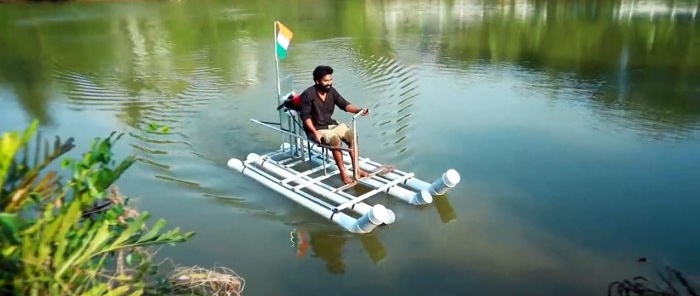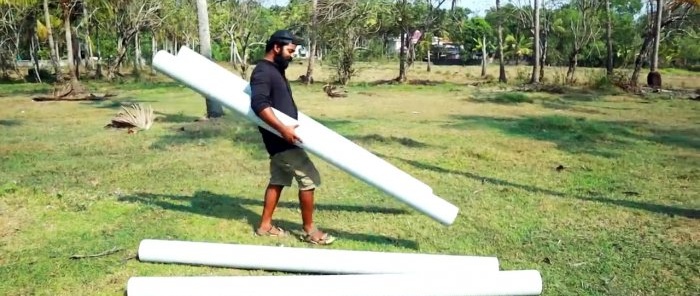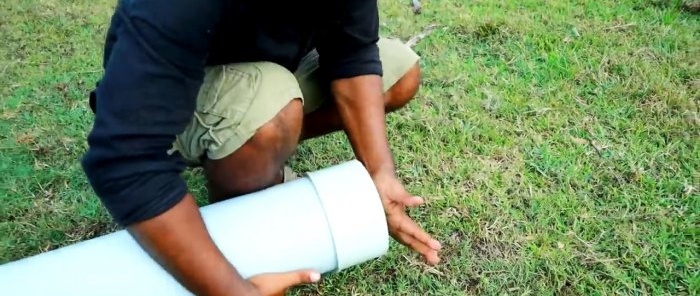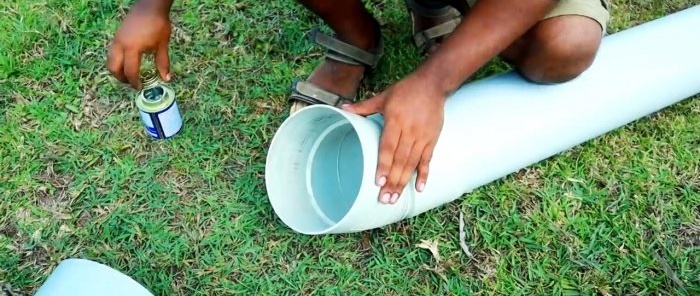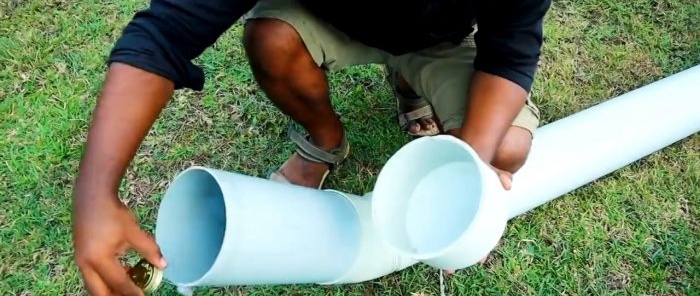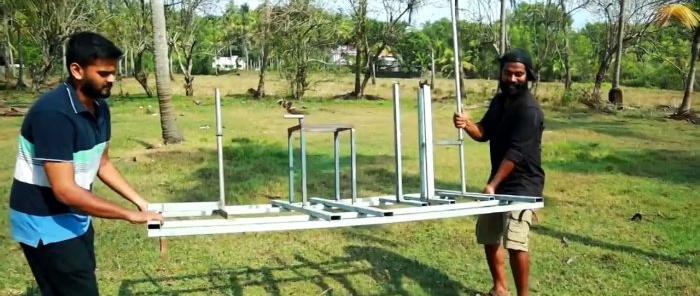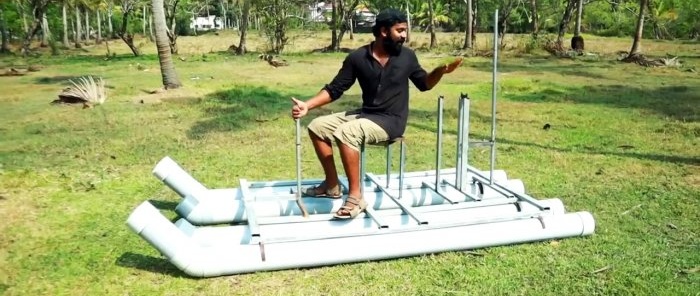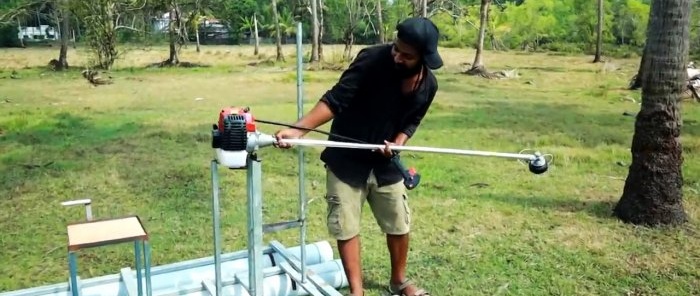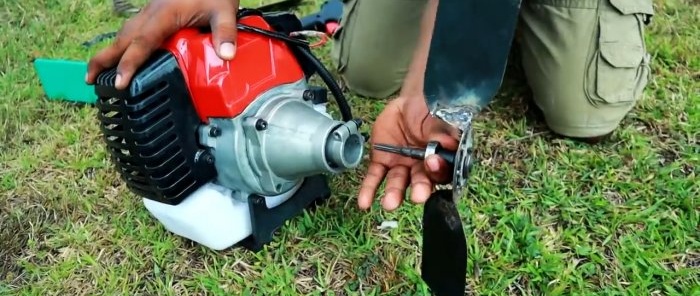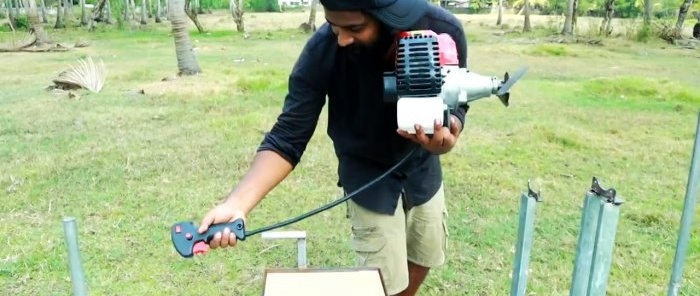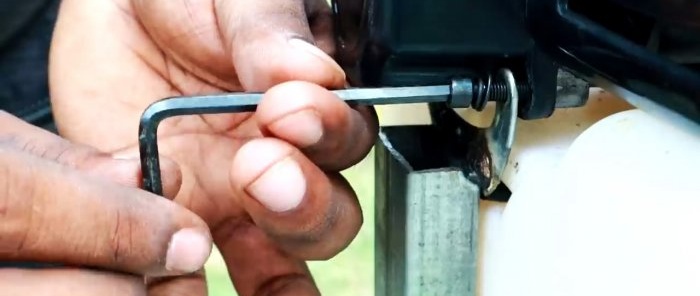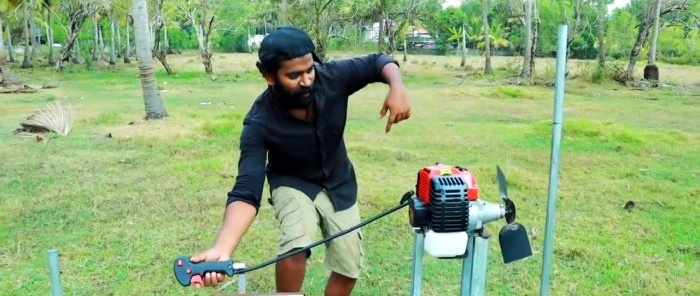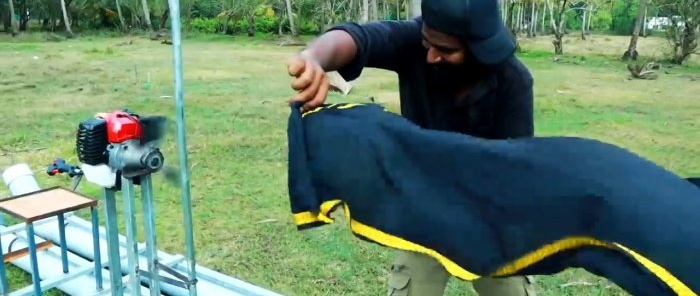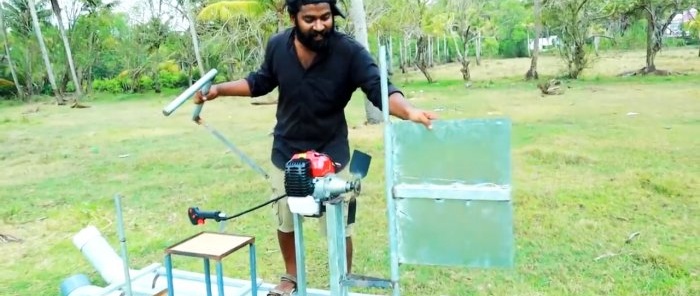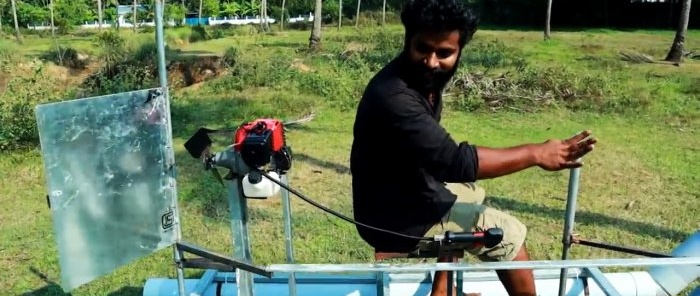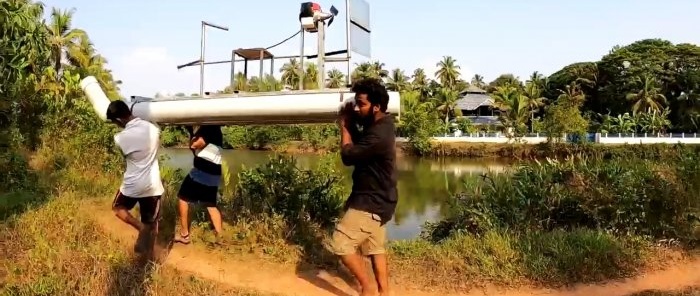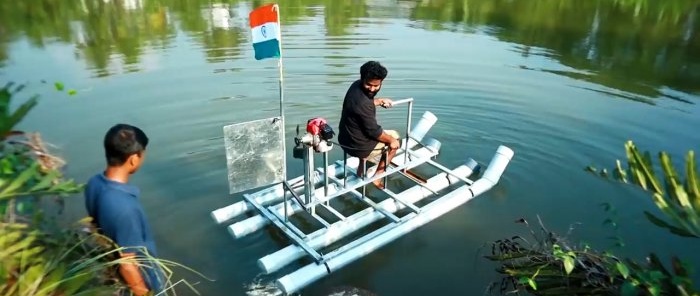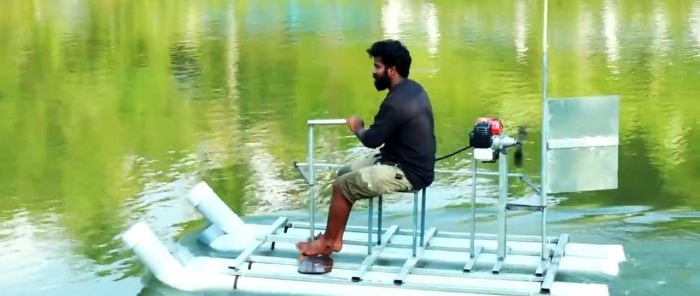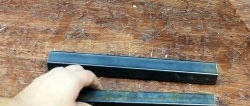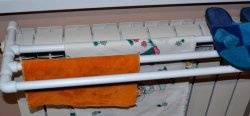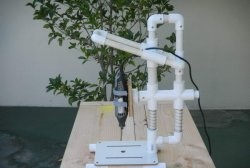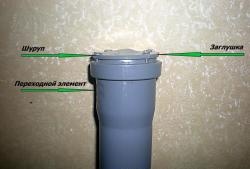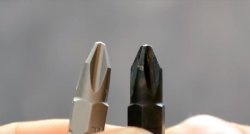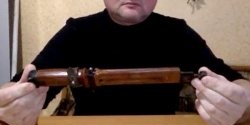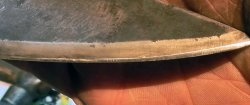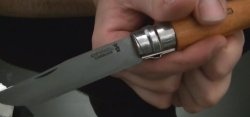How to make a simple boat from PVC pipes and a trimmer engine
A boat made of plastic pipes is no longer a know-how, but equipping it with a propeller is a fairly fresh idea. Such a boat has a shallow draft, and due to the absence of a submersible propeller, it can navigate shallows, almost puddles. Thanks to this, it can be used for walking in shallow or overgrown bodies of water.
To make the structure as light as possible, it is necessary to use rolled metal of minimum thickness. Many parts that do not require welding can be replaced with aluminum or lightweight drywall profiles.
4 plastic sewer pipes of 2 meters each are used as air cylinders for the boat. On one side they need to be closed with plugs. To make everything airtight, the plugs are placed on glue or silicone.
The pipes are laid parallel.45 degree knees are glued onto the outermost ones. Then pipe cuttings of 50 cm are placed on the knees. The cuttings themselves are closed with plugs. The central pipes are equipped with an elbow and a plug, without cuttings.
The boat platform is welded from a profile pipe. At its bottom, supports bent from a strip of arcs are welded into plastic pipes. There are 2 supports for each pipe. You need to make a seat in the center of the frame.
Behind the seat, 3 posts are welded onto the platform. The engine from a brush cutter without a rod is attached to them.
Instead, a screw is inserted into its gearbox. It is made from galvanized steel. The screw is welded to a section of shaft from a rod with a bearing installed. It is inserted into the gearbox with splines and clamped with a clamp on the bearing. In front of the seat on the right, a short stand is welded for installing the gas button.
Immediately behind the engine propeller, the rudder blade must be installed on a stand made of half-inch pipe.
It is a galvanized sheet welded onto an inch pipe. For rigidity in the center, it is reinforced with a profile pipe.
On the right side, perpendicular to the inch pipe, a section of profile is welded to connect to the steering rod. To prevent the feather from falling below the engine blades, a limiter is welded onto the stand.
In front of the seat, a short stand made of half-inch pipe is welded in the center. Install an L-shaped tiller from an inch pipe onto it. On the right, a profile pipe is welded to it to connect the rod. Then you need to install a rod from a pipe or strip between the tiller and the feather on the bolts.
After the boat is launched into the water and the engine is started, it will begin to move forward.
By turning the tiller you can adjust the position of the feather, thereby changing the direction.Despite the use of a low-power motor from a brush cutter and small blades, the boat reaches walking speed. If you want the equipment to be transported by several people, you must cover the screw with a mesh casing. This boat is collapsible. It can be transported in a trailer or van.
Materials:
- PP or PVC pipes 200 mm 2 m – 5 pcs.;
- plugs for pipes 200 mm – 8 pcs.;
- elbows 45 degrees for pipes 200 mm – 4 pcs.;
- PVC glue or silicone;
- profile pipes 20x20 mm, 20x40 mm;
- steel strip 20 mm;
- petrol brush cutter;
- galvanizing;
- 1/2 and 1 inch pipes.
To make the structure as light as possible, it is necessary to use rolled metal of minimum thickness. Many parts that do not require welding can be replaced with aluminum or lightweight drywall profiles.
Boat making process
4 plastic sewer pipes of 2 meters each are used as air cylinders for the boat. On one side they need to be closed with plugs. To make everything airtight, the plugs are placed on glue or silicone.
The pipes are laid parallel.45 degree knees are glued onto the outermost ones. Then pipe cuttings of 50 cm are placed on the knees. The cuttings themselves are closed with plugs. The central pipes are equipped with an elbow and a plug, without cuttings.
The boat platform is welded from a profile pipe. At its bottom, supports bent from a strip of arcs are welded into plastic pipes. There are 2 supports for each pipe. You need to make a seat in the center of the frame.
Behind the seat, 3 posts are welded onto the platform. The engine from a brush cutter without a rod is attached to them.
Instead, a screw is inserted into its gearbox. It is made from galvanized steel. The screw is welded to a section of shaft from a rod with a bearing installed. It is inserted into the gearbox with splines and clamped with a clamp on the bearing. In front of the seat on the right, a short stand is welded for installing the gas button.
Immediately behind the engine propeller, the rudder blade must be installed on a stand made of half-inch pipe.
It is a galvanized sheet welded onto an inch pipe. For rigidity in the center, it is reinforced with a profile pipe.
On the right side, perpendicular to the inch pipe, a section of profile is welded to connect to the steering rod. To prevent the feather from falling below the engine blades, a limiter is welded onto the stand.
In front of the seat, a short stand made of half-inch pipe is welded in the center. Install an L-shaped tiller from an inch pipe onto it. On the right, a profile pipe is welded to it to connect the rod. Then you need to install a rod from a pipe or strip between the tiller and the feather on the bolts.
After the boat is launched into the water and the engine is started, it will begin to move forward.
By turning the tiller you can adjust the position of the feather, thereby changing the direction.Despite the use of a low-power motor from a brush cutter and small blades, the boat reaches walking speed. If you want the equipment to be transported by several people, you must cover the screw with a mesh casing. This boat is collapsible. It can be transported in a trailer or van.
Watch the video
Similar master classes
Particularly interesting
Comments (0)

